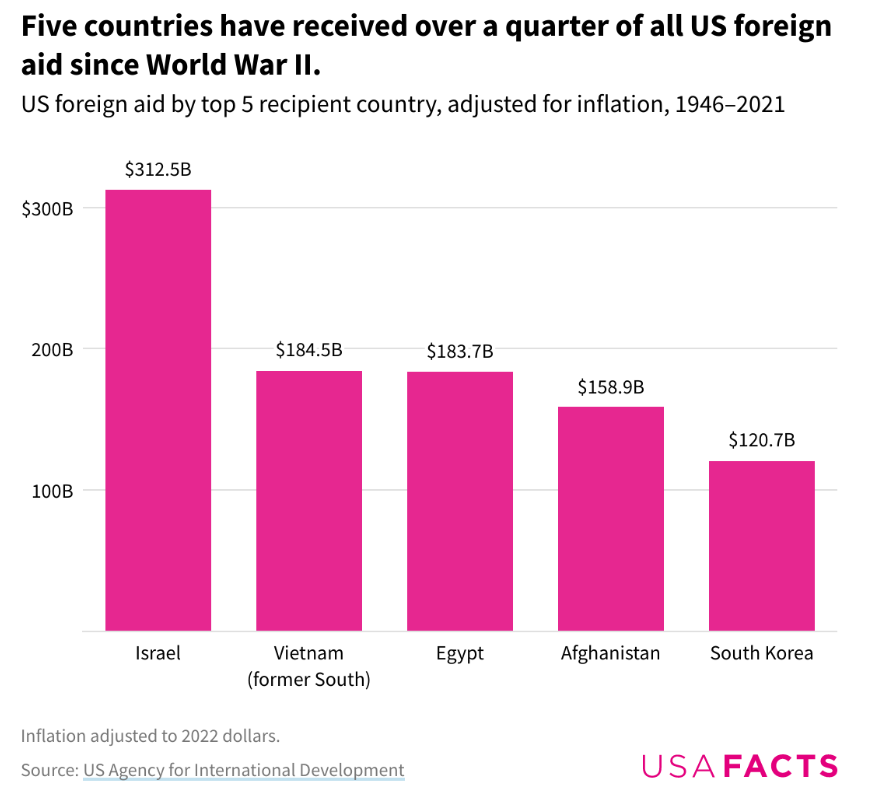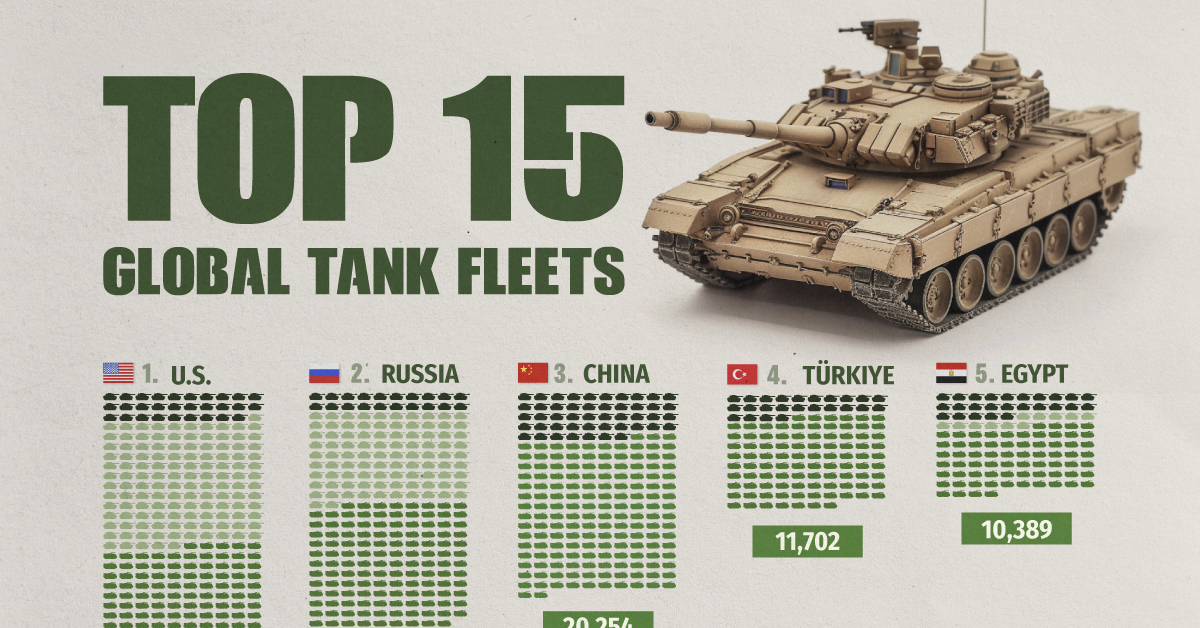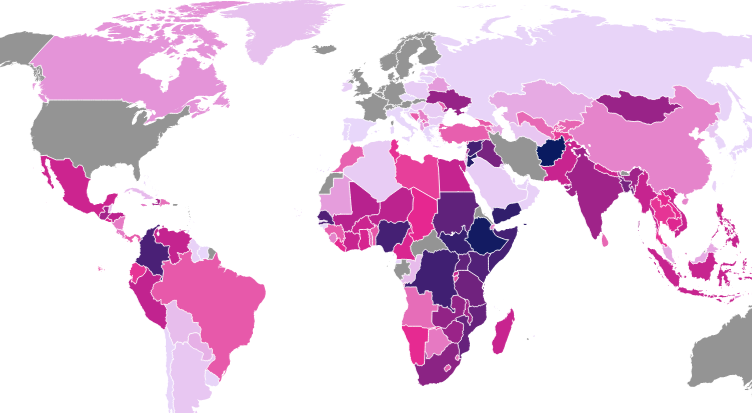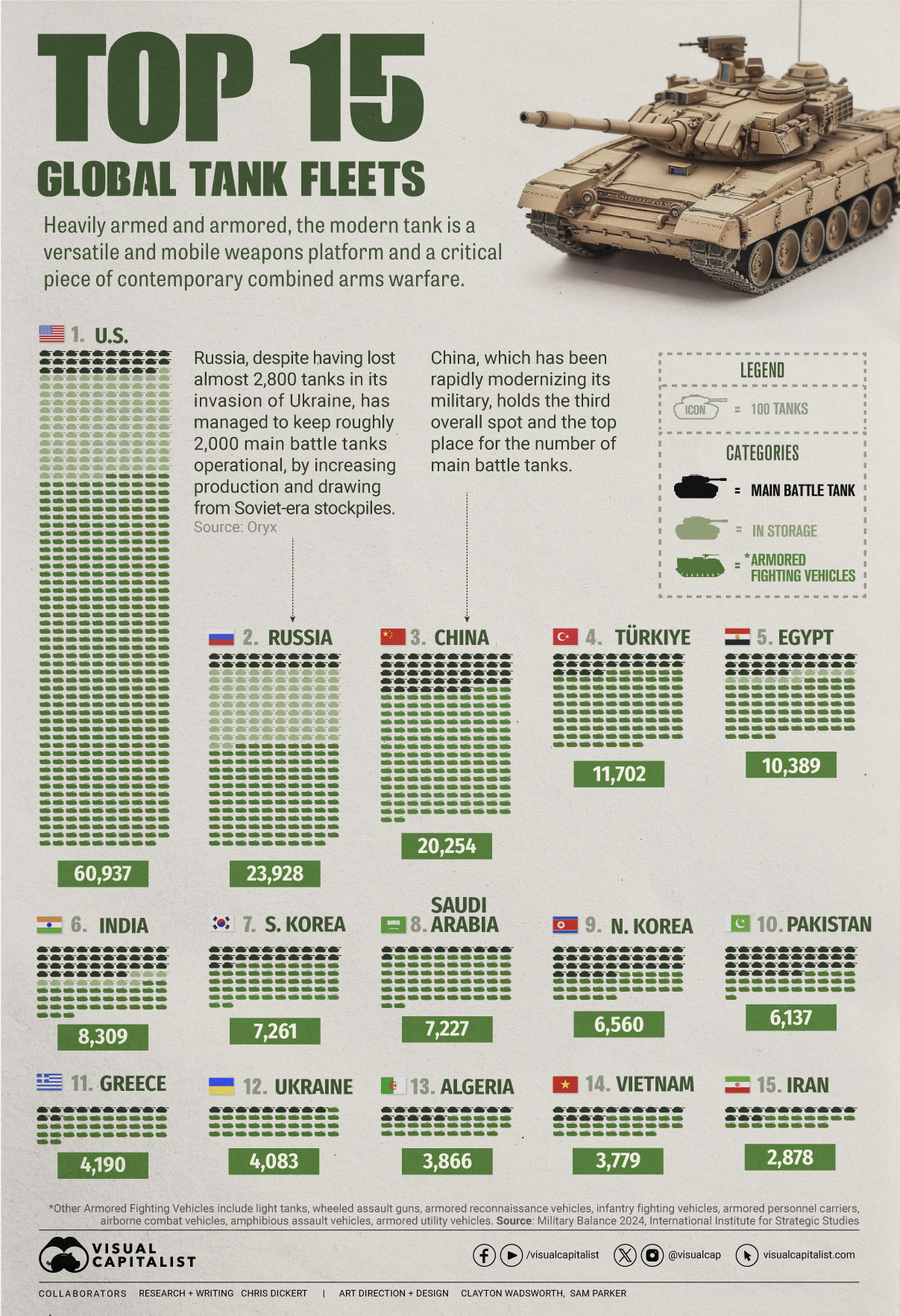Politics
Which Countries Receive the Most Foreign Aid from the U.S.?
!function(){“use strict”;window.addEventListener(“message”,(function(a){if(void 0!==a.data[“datawrapper-height”]){var e=document.querySelectorAll(“iframe”);for(var t in a.data[“datawrapper-height”])for(var r=0;r<e.length;r++)if(e[r].contentWindow===a.source){var i=a.data["datawrapper-height"][t]+"px";e[r].style.height=i}}}))}();
Which Countries Receive the Most Foreign Aid From the U.S.?
The United States provided more than $50 billion in aid to over 150 countries and territories, regional funds, and NGOs in 2021.
Each year, Congress appropriates foreign assistance based on national security, commercial, and humanitarian interests.
In this map, USAFacts uses data from the U.S. Agency for International Development (USAID) to highlight the countries that received the largest portion of aid.
Food Assistance and the War on Drugs
In 2021, the U.S. directed its aid towards nations grappling with internal conflicts and humanitarian crises.
Following the withdrawal of American troops that same year, Afghanistan emerged as the primary recipient of substantial aid, receiving billions of dollars annually as part of the humanitarian response.
| Country | Assistance (USD) | Top Activity |
|---|---|---|
| 🇦🇫 Afghanistan | $1.5 billion | Humanitarian Assistance |
| 🇪🇹 Ethiopia | $1.4 billion | Emergency Food Assistance |
| 🇯🇴 Jordan | $1.3 billion | Cash Transfer |
| 🇾🇪 Yemen | $1.1 billion | Emergency Food Assistance |
| 🇸🇸 South Sudan | $1.0 billion | Emergency Food Assistance |
| 🇨🇩 DRC | $891 million | Emergency Food Assistance |
| 🇸🇾 Syria | $844 million | Humanitarian Assistance |
| 🇳🇬 Nigeria | $828 million | Global Health Supply Chain |
| 🇨🇴 Colombia | $761 million | Counter-Narcotics |
| 🇸🇩 Sudan | $620 million | Emergency Food Assistance |
Among the top countries benefiting from U.S. assistance are various African nations contending with both famine and internal conflicts. Notably, Colombia stands out in the top 10, receiving millions of dollars to combat drug trafficking.
Israel Leading in Aid Over Time
Since the end of World War II, the U.S. has disbursed more than $3.75 trillion in foreign aid (adjusted for inflation).
The post-war years saw foreign aid peak, primarily because of the Marshall Plan. This initiative aimed to assist in restoring the economic infrastructure of post-war Europe.
At its height in 1949, U.S. foreign aid totaled nearly $100 billion.
Israel has been by far the largest cumulative recipient of U.S. foreign assistance. Since the 1940s, Israel has received more than $300 billion, with most of it in military support, aiding the country in developing a missile defense system and other projects.

The primary reason for this foreign aid has been to guarantee U.S. interests in the region, given Israel’s proximity to Syria to the northeast, Hezbollah-influenced Lebanon to the north, and an Islamist insurgency in Egypt’s Sinai to the south.
After a two-decade conflict that took millions of Vietnamese lives and roughly 58,000 American lives, Vietnam is Washington’s second-largest recipient of financial support. This money is used for economic and technological cooperation, military support, and even to aid cleanup efforts from the U.S. military’s use of Agent Orange in Vietnam during the war.
Since 1975, Egypt has been a significant recipient of substantial foreign aid from the United States, primarily as part of diplomatic efforts to mitigate tensions in the Arab-Israeli context.
Washington also sent large aid packages to South Vietnam, South Korea, and other countries during the Cold War.
Since 2003, much of the money has been directed toward Iraq, Afghanistan, and Pakistan.
The Debate Surrounding U.S. Foreign Aid
According to a recent report by the Congressional Research Service, foreign aid can serve as a means to bolster the United States’ global influence, tackle worldwide challenges, and advance common values.
Nonetheless, the same report reveals that certain Americans and Members of Congress consider foreign aid an expenditure the country cannot afford, given current budget deficits and competing budget priorities.
In 2021, U.S. assistance to other countries accounted for around 0.7% of the federal government’s total expenditures.

This article was published as a part of Visual Capitalist's Creator Program, which features data-driven visuals from some of our favorite Creators around the world.
War
Visualized: Top 15 Global Tank Fleets
Heavily armed and armored, the modern tank is a versatile and mobile weapons platform, and a critical piece of contemporary warfare.

The Top 15 Global Tank Fleets
This was originally posted on our Voronoi app. Download the app for free on iOS or Android and discover incredible data-driven charts from a variety of trusted sources.
Heavily armed and armored, the modern tank is a versatile and mobile weapons platform, and a critical piece of contemporary warfare.
This visualization shows the top 15 global tank fleets, using data from the 2024 Military Balance report from the International Institute for Strategic Studies (IISS).
Let’s take an in-depth look at the top three fleets:
1. United States
As the world’s pre-eminent military power, it’s perhaps no surprise that the United States also has the largest tank fleet, by a wide margin.
In total, they have just over 45,000 armored fighting vehicles in operation, along with 2,640 main battle tanks (MBTs), and 12,800 vehicles in storage, of which 2,000 are main battle tanks.
| Category | Vehicles | Global rank |
|---|---|---|
| Main battle tanks | 2,640 | 4 |
| Armored reconnaissance | 1,745 | 1 |
| Infantry fighting vehicles | 3,262 | 3 |
| Armored personnel carriers | 10,644 | 1 |
| Amphibious assault vehicles | 1,401 | 1 |
| Armored utility vehicles | 28,445 | 1 |
| Storage | 12,800 | 1 |
| Total | 60,937 | 1 |
The U.S. is internalizing the lessons from the ongoing invasion of Ukraine, where Western-supplied anti-tank weapons and massed Ukrainian artillery have been cutting Russian tanks to pieces. As a result, the U.S. recently canceled an upgrade of the M1 Abrams in favor of a more ambitious upgrade.
Meanwhile, the U.S. is nervously eyeing a more confident China and a potential clash over Taiwan, where air and naval forces will be critical. However, a recent war game showed that Taiwanese mechanized ground forces, kitted out with American-made tanks and armored fighting vehicles, were critical in keeping the island autonomous.
2. Russia
According to Oryx, a Dutch open-source intelligence defense website, at time of writing, Russia has lost almost 2,800 main battle tanks since invading Ukraine. Considering that in the 2022 edition of the Military Balance, Russia was estimated to have 2,927 MBTs in operation, those are some hefty losses.
Russia has been able to maintain about 2,000 MBTs in the field, in part, by increasing domestic production. Many defense plants have been taken over by state-owned Rostec and now operate around the clock. Russia is also now spending a full third of their budget on defense, equivalent to about 7.5% of GDP.
At the same time, they’ve also been drawing down their Soviet-era stockpiles, which are modernized before being sent to the front. Just how long they can keep this up is an open question; their stockpiles are large, but not limitless. Here is what their storage levels look like:
| Category | 2023 | 2024 | YOY change |
|---|---|---|---|
| Main battle tanks | 5,000 | 4,000 | -20.0% |
| Armored reconnaissance | 1,000 | 100 | -90.0% |
| Infantry fighting vehicles | 4,000 | 2,800 | -30.0% |
| Armored personnel carriers | 6,000 | 2,300 | -61.7% |
| Total | 16,000 | 9,200 | -42.5% |
3. China
China holds the third overall spot and top place globally for the number of main battle tanks in operation. Untypically, the People’s Liberation Army has no armored vehicles in storage, which perhaps isn’t surprising when you consider that China has been rapidly modernizing its military and that stockpiles usually contain older models.
China also has one of the world’s largest fleets of armored fighting vehicles, second only to the United States. Breaking down that headline number, we can also see that they have the largest number of light tanks, wheeled guns, and infantry fighting vehicles.
| Category | Vehicles | Global rank |
|---|---|---|
| Main battle tanks | 4,700 | 1 |
| Light tanks | 1,330 | 1 |
| Wheeled guns | 1,250 | 1 |
| Infantry fighting vehicles | 8,200 | 1 |
| Armored personnel carriers | 3,604 | 5 |
| Airborne combat vehicles | 180 | 2 |
| Amphibious assault vehicles | 990 | 2 |
| Total | 20,254 | 3 |
This is equipment that would be integral if China were to make an attempt to reunify Taiwan with the mainland by force, where lightly armored mechanized units need to move with speed to occupy the island before Western allies can enter the fray. It’s worth noting that China also has one of the world’s largest fleets of amphibious assault vehicles.
End of the Tank?
Many commentators at the outset of Russia’s invasion of Ukraine, were quick to predict the end of the tank, however, to paraphrase Mark Twain, reports of the tank’s demise are greatly exaggerated.
With the U.S. and China both developing remote and autonomous armored vehicles, tanks could be quite different in the future, but there is nothing else that matches them for firepower, mobility, and survivability on the modern battlefield today.
-

 Sports1 week ago
Sports1 week agoThe Highest Earning Athletes in Seven Professional Sports
-

 Countries2 weeks ago
Countries2 weeks agoPopulation Projections: The World’s 6 Largest Countries in 2075
-

 Markets2 weeks ago
Markets2 weeks agoThe Top 10 States by Real GDP Growth in 2023
-

 Demographics2 weeks ago
Demographics2 weeks agoThe Smallest Gender Wage Gaps in OECD Countries
-

 United States2 weeks ago
United States2 weeks agoWhere U.S. Inflation Hit the Hardest in March 2024
-

 Green2 weeks ago
Green2 weeks agoTop Countries By Forest Growth Since 2001
-

 United States2 weeks ago
United States2 weeks agoRanked: The Largest U.S. Corporations by Number of Employees
-

 Maps2 weeks ago
Maps2 weeks agoThe Largest Earthquakes in the New York Area (1970-2024)















